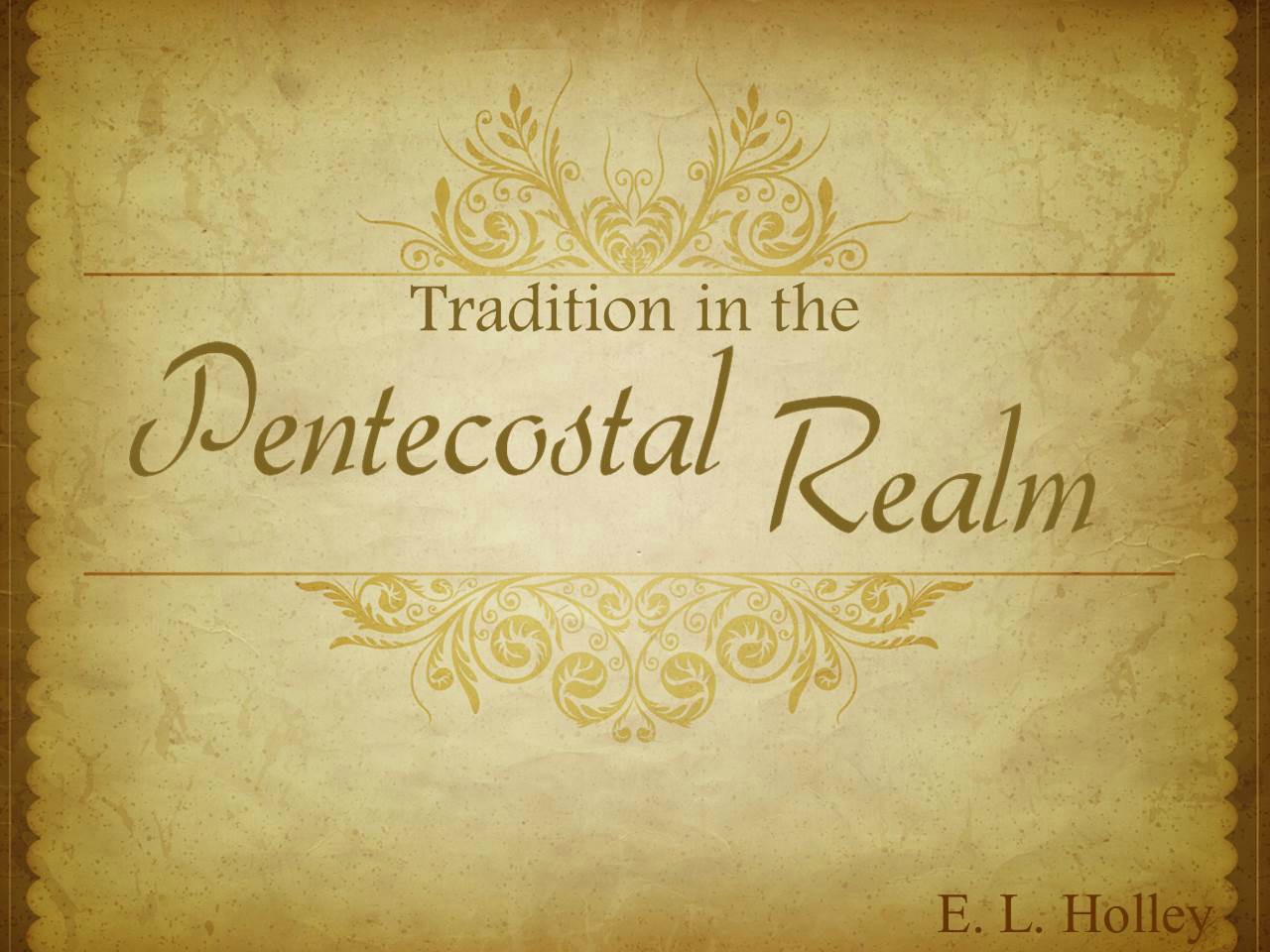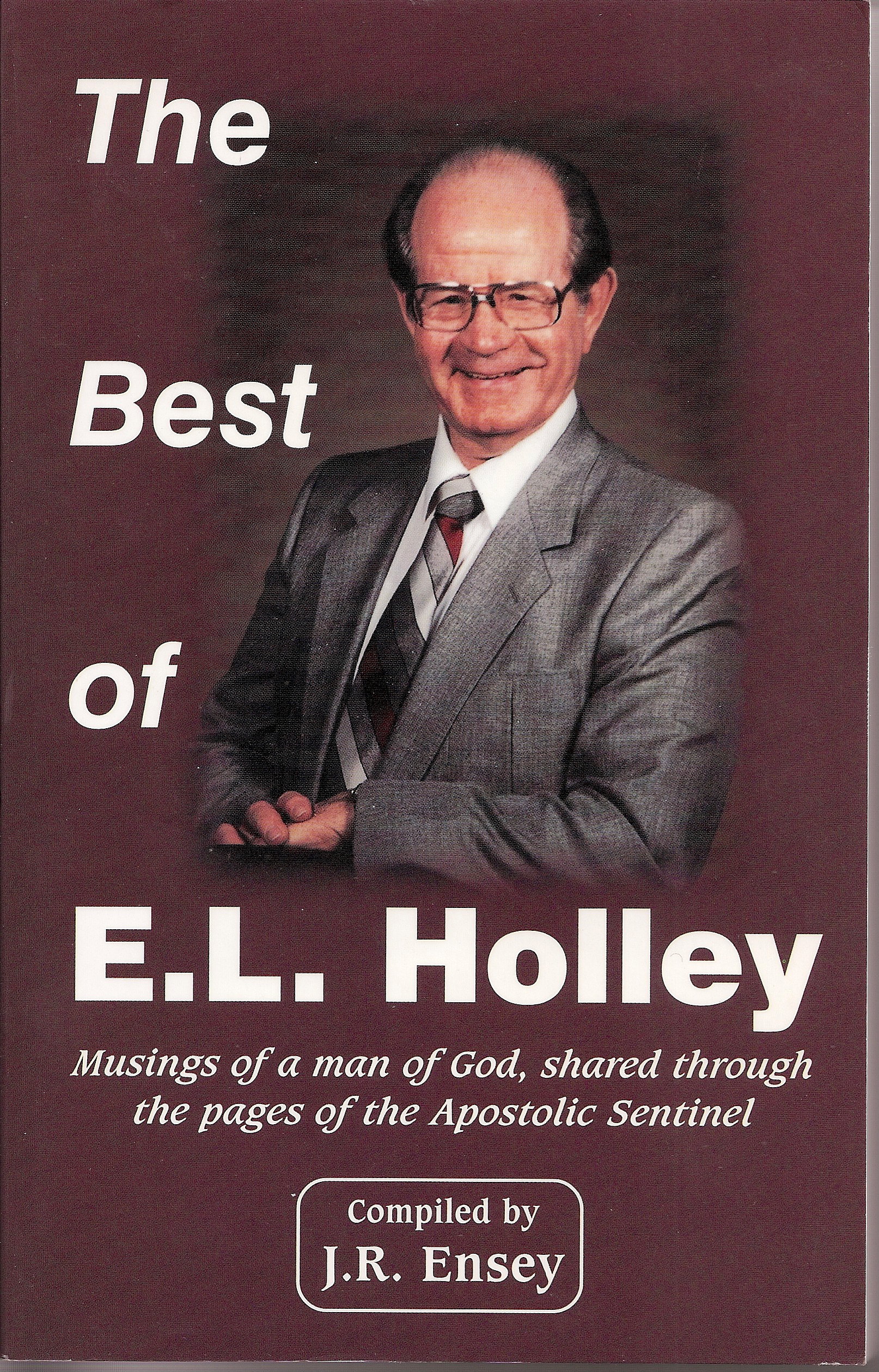As we’ve seen, the doctrine of the trinity is a flagrant contradiction to the Word of God and does violence to its holy precepts! The doctrine concerning the dance, however, is within the realm of scriptural teaching and harmonizes with its intents! It does not contradict the commandments of God, but complements them. It interprets Bible teaching in the light of modern-day practices and applies the general doctrine of holiness to a specific practice!

By E.L. Holley
To View the Entire Article, Click Here
To Download the Entire Article Directly to Your Computer, Click Here
To View the Outline, Click Here
To View the PowerPoint, Click Here
To assume that all tradition is erroneous simply because it is tradition is faulty assumption. The church Jesus built has always embraced tradition and still does today! The apostles exhortation to “stand fast and hold the traditions which ye have been taught whether by word or by our epistle” (II Thessalonians 2:15), leaves little doubt in the matter. It is quite obvious that traditional teaching has always occupied a vital role in the work of the church.
Tradition as it is presented in the Scriptures is a belief, habit, practice, or principle which has been handed down verbally from one generation to another. Having no specific scriptural authority, tradition is transmitted to the following generation, either by precept or example, who generally accept it as proper and authoritative without question. Often the only basis for such wholehearted acceptance is their faith in the word and wisdom of their elders.
Naturally, the results are not all good; neither are they all bad. For instance the doctrine of the trinity is a traditional position for which there is no valid scriptural authority. The lack of specific scriptural authority, however, isn’t the greatest fallacy involved in the teaching. The main fault of doctrine lies in its flagrant contradiction to the Word of God!
The first of all the commandments is “Hear, O Israel, the Lord our God is one Lord” (Mark 12:29). Therefore, the doctrine of the trinity, with its futile attempts to divide the one true God into three separate and distinct personages, is in violent opposition to the clear commandment of God’s Word! Consequently in order to believe the traditional teaching of a mystical trinity of persons in God, one must reject the commandment of God’s Word. In such an approach we see a clear example of a tradition which can make the commandment of God of none effect.
However, there are doctrines and practices of the church which are based upon tradition and are very vital. These are beliefs we know to be essentially sound and yet they are teachings which have no specific precise scriptural authority, other than being embedded in clear principle.
For one illustration among many, consider the teaching of the church concerning the modern dance. We teach with vigor that a Christian should never engage in the practice. We point out without fear of successful contradiction that the modern dance incites lust, lowers morals, encourages licentious liberties, and fosters gross immorality. Therefore we rightly conclude that dancing is a lascivious activity, and since Scripture teaches lasciviousness to be a work of the flesh (Galatians 5:19), those who walk in the Spirit must avoid it and have no part in the practice. Furthermore, “They which do such things shall not inherit the kingdom of God” (Galatians 5:21). Our conclusion is rightly dogmatic!
Yet there isn’t one verse of Scripture that specifically states that it is sinful to perform the rumba! Consequently, our teaching on the point is without precise scriptural authority. It is a traditional doctrine. Thus we see the good and bad. Since both teachings are without specific scriptural commandment, what is the big difference between the two?
To View the Entire Article, Click Here
To Download the Entire Article Directly to Your Computer, Click Here
To View the Outline, Click Here



